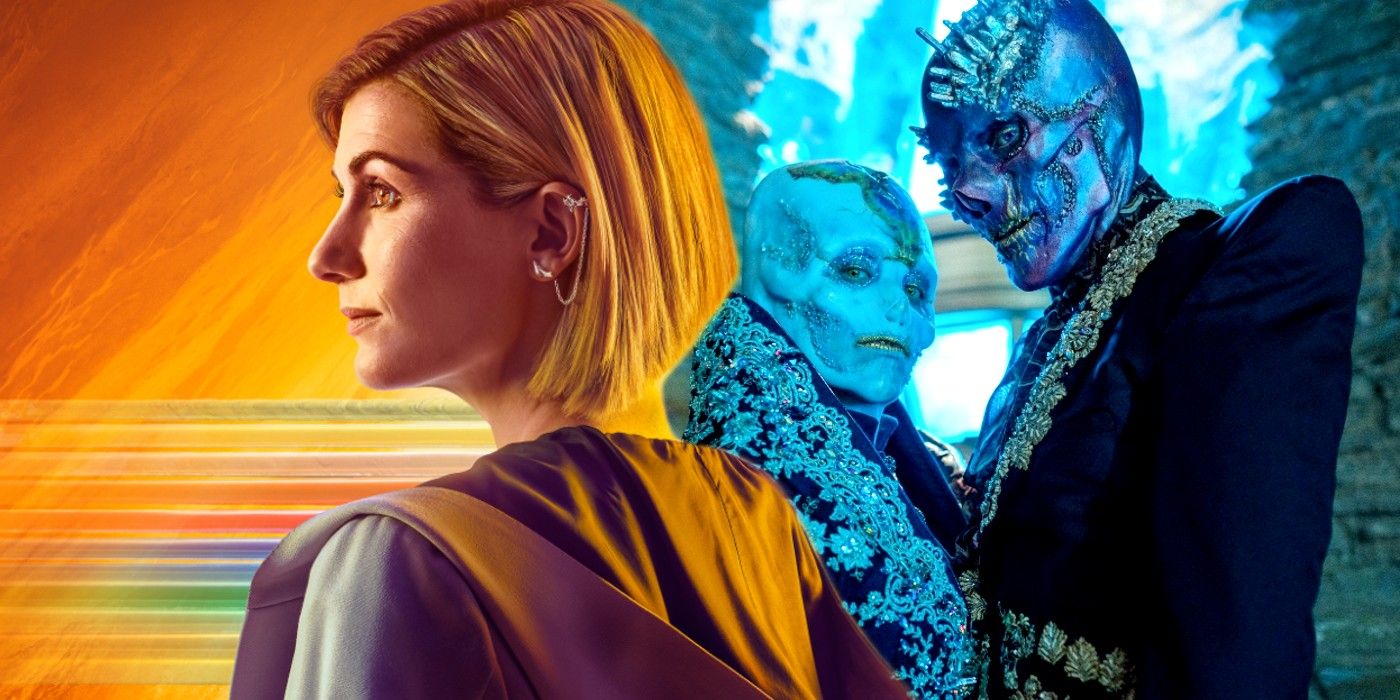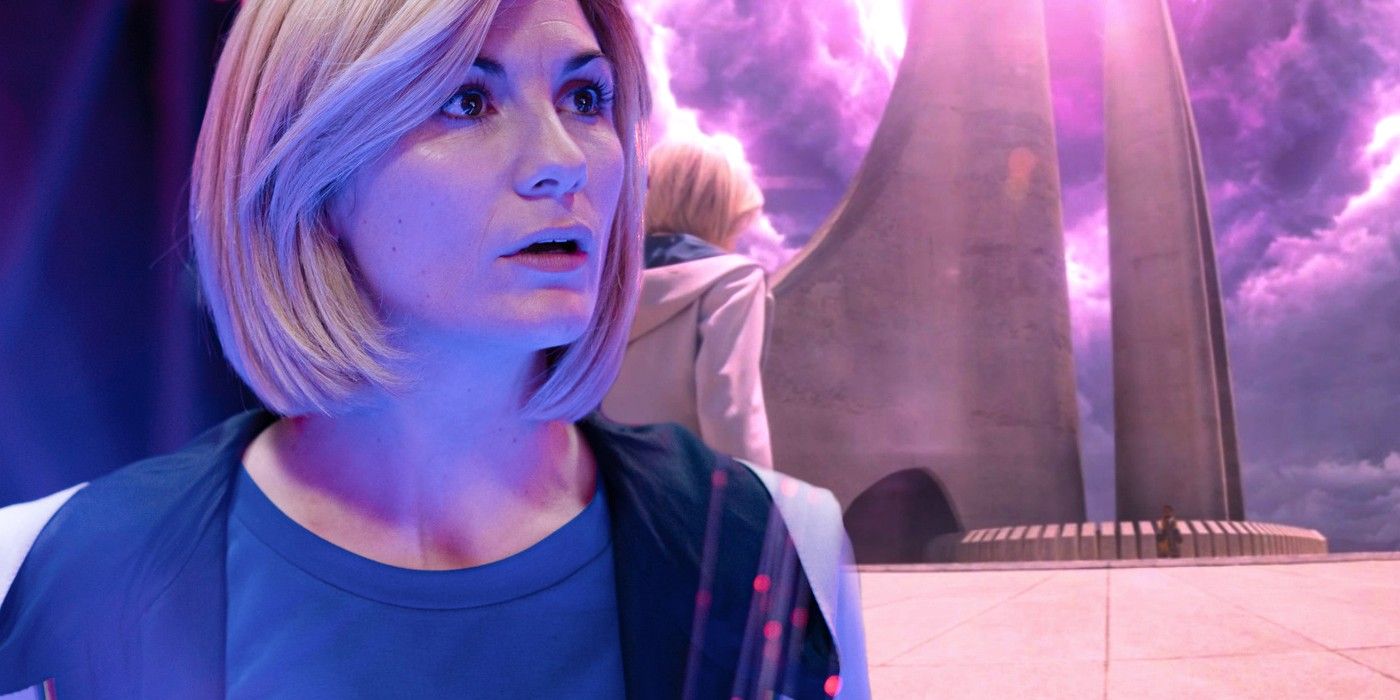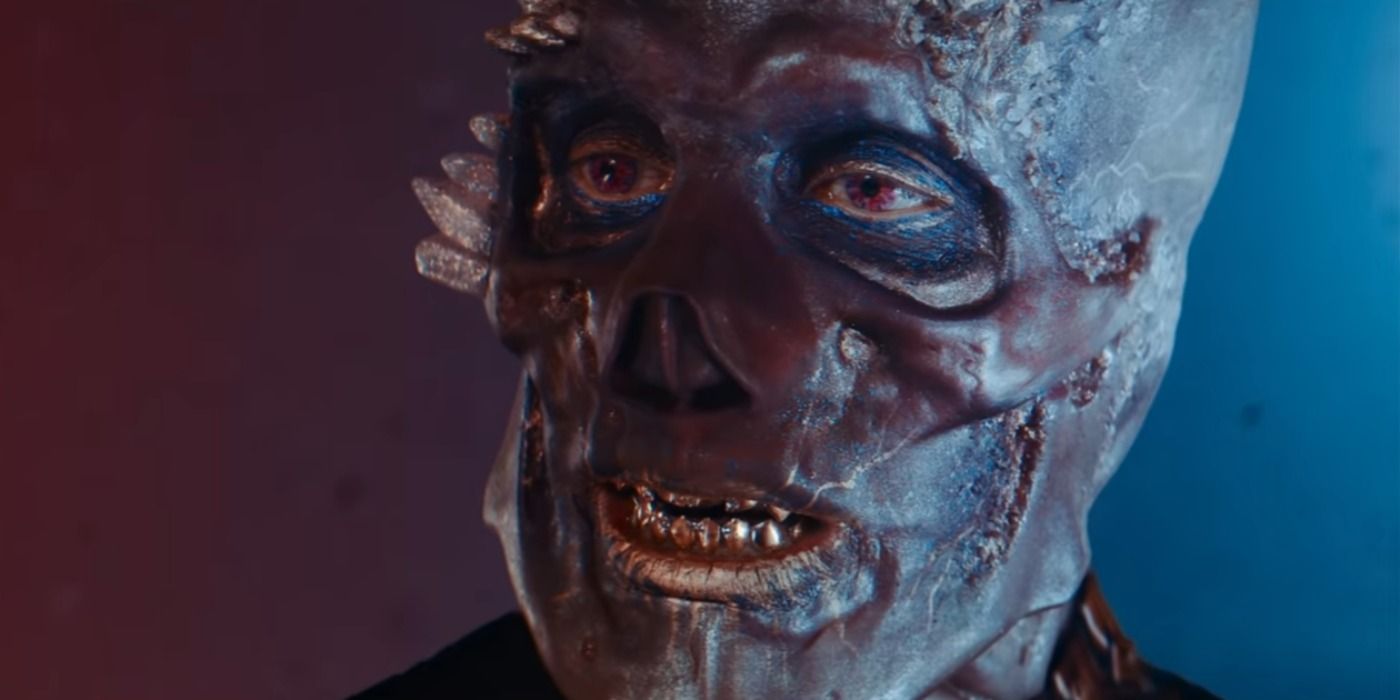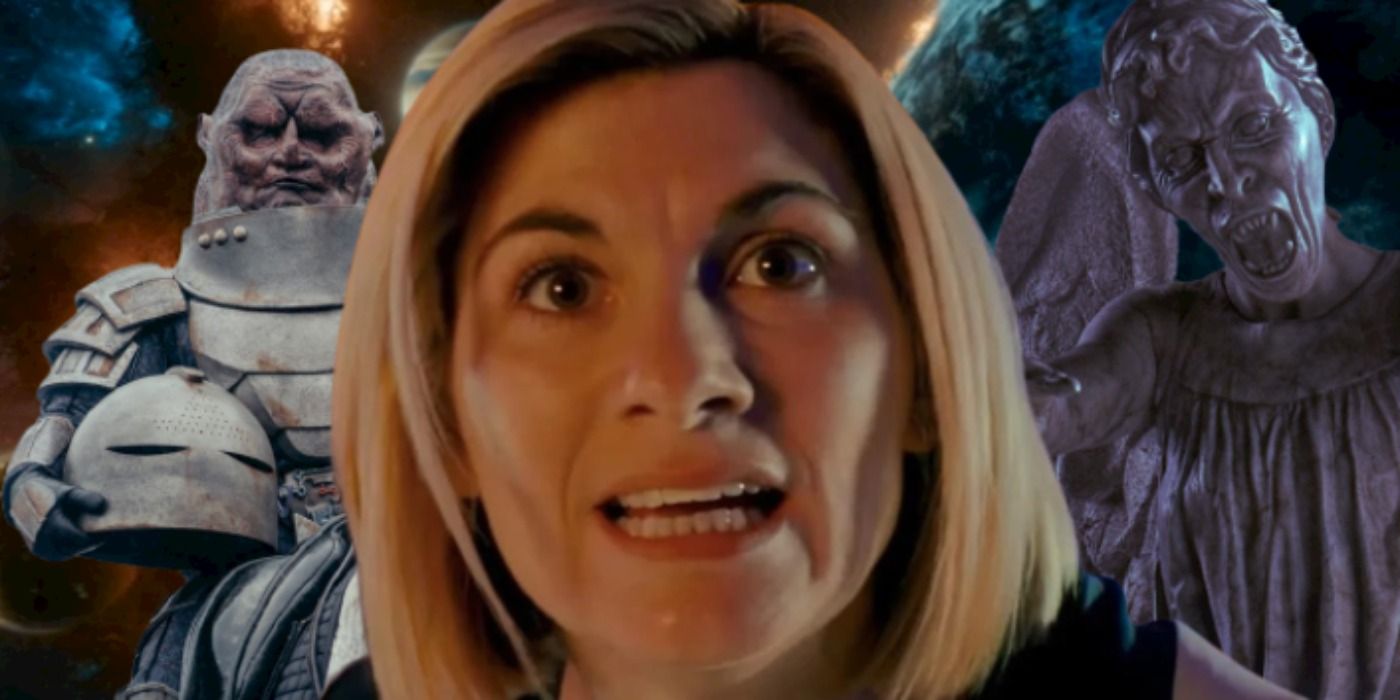The familiar Whittaker-era problems haven't disappeared in Doctor Who: Flux... they've simply regenerated. Chris Chibnall has overseen one of the more divisive eras in Doctor Who's long history. Though Jodie Whittaker's Thirteenth Doctor has garnered well-deserved acclaim - as have the modernized visuals - Doctor Who audiences reacted less favorably toward the storylines that comprised seasons 11 and 12. Chief among them is the fan-splitting Timeless Child revelation, which identified The Doctor as an immigrant from another universe, who the people of Gallifrey exploited to create Time Lord society.
After straight seasons suffering similar slip-ups, Doctor Who: Flux presented an opportunity for Chris Chibnall to exit with a bang. Dropping the traditional episodic structure, Doctor Who: Flux serves as one big story incorporating diverse villains such as the Weeping Angels and Sontarans, as well as a mysterious old adversary by the name of Swarm. Doctor Who: Flux begins its six-part arc with "The Halloween Apocalypse," but the question of "can Chibnall's Doctor Who improve?" is already proving tricky to answer.
On one hand, Doctor Who: Flux addresses a major drawback of Jodie Whittaker's TARDIS tenure, but rather than learning from past mistakes and improving, "The Halloween Apocalypse" creates other problems, taking one vworp forward and two vworps back.
Doctor Who's Whittaker Era Had Good Ideas (But Squandered Them)
Through the deluge of criticism aimed Chris Chibnall's way, it's easy to overlook the many intrigue-stoking concepts and buzz-worthy plot points introduced across Doctor Who's Whittaker era. Indeed, the biggest failure of Doctor Who seasons 11 & 12 wasn't a lack of good ideas - it was executing them properly. Time and again, Jodie Whittaker's Thirteenth Doctor would encounter a new alien race or compelling cosmic conundrum that would excite initially, but ultimately fail to reach its potential.
The Stenza are a prime example. The first Chibnall-era alien The Doctor encountered was the pick of season 11's bunch - a ruthless warrior hunting for trophies on Earth, able to kill with his bare hands. Tzim-Sha proved a worthy adversary in "The Woman Who Fell To Earth," and "The Ghost Monument" added to Stenza mythology by revealing how this violent race cleansed planets, transforming them into barren wastelands in the name of ritualistic hunting. Doctor Who's promised a Predator-esque alien race waging war across the universe - like the Sontarans, but with less resemblance to root vegetables. When Tzim-Sha returned in Doctor Who season 11's finale, however, the Stenza threat level never developed beyond "moderately annoying." There was no invasion fleet, no picking planets clean, and no becoming the top-tier baddies Jodie Whittaker's first episode hinted at. Tellingly, they haven't been back since.
And the Stenza example is far from an isolated incident. "Demons of the Punjab" introduced the Thijarians - an ancient assassin species who changed their ways and now bear witness to the deaths of those across the galaxy who would otherwise perish alone. That's a fantastic base concept for a Doctor Who monster, and the Thijarians could've become the Chibnall era's Ood - sometimes friendly, sometimes not, but never bringing good news when they turn up. Like the Stenza, the Thijarians haven't featured beyond a single storyline.
Even the deeply controversial Timeless Child reveal could've been great for Doctor Who. Chris Chibnall had audiences eagerly awaiting the answer to his biggest mystery, which tied into The Doctor's past and was so deeply unsettling, even The Master was troubled upon discovering the truth. The core idea of a long-term Doctor Who mystery that digs into the titular Time Lord's ancient history is brimming with potential, but the Timeless Child failed due to over-ambition. Instead of revealing some fascinating new details about The Doctor's life pre-1963, the Timeless Child completely rewrote Doctor Who canon, leaving a tangle of unanswered questions and insurmountable plot holes in its wake. Another promising setup flushed down the time vortex.
Doctor Who: Flux Has Good Ideas (& Doesn't Waste Them)
Doctor Who: Flux's "The Halloween Apocalypse" finds Chris Chibnall sprinkling more tantalizing narrative seeds - but actually capitalizing on them, instead of allowing the shoots to wilt like seasons 11 & 12 might've. The most obvious example is Swarm himself - an ancient villain locked up by the Time Lords, and a forgotten nemesis of The Doctor's from back in the day. As well as having that all-important personal connection, Swarm's control over the Flux means a giant wave of CG decimation gliding across the universe. Amplifying the intrigue further, the Flux is known to the Lupari, the Sontarans, and likely many others - but The Doctor herself is strangely in the dark. At this early stage, Swarm has all the makings of a classic Doctor Who villain, and had he debuted elsewhere in Chibnall's run, he'd have been dealt with by the end credits. Fortunately, Doctor Who: Flux (the clue's in the title) is making Swarm a feature attraction, and with another 5 episodes to explore his backstory and powers, the Whittaker era is finally doing justice to a hot angle instead of letting it grow cold.
Signs that the TARDIS could be dying tease another storyline bubbling with potential in Doctor Who: Flux. Though The Doctor's ship has been bashed around like James Bond's latest Aston Martin (and for just as many decades), the TARDIS hasn't been in serious trouble since the Time Lords grounded her during Jon Pertwee's era. Leaking black sludge and doors in the wrong places strongly hint the TARDIS could be on its last legs, and that's a novel, worthy storyline for Doctor Who: Flux to explore. The payoff may disappoint yet, but Thirteen's TARDIS trouble is another sign Doctor Who: Flux is better utilizing its material.
Similar plaudits go to the mysterious Claire - one of the biggest talking points emerging from "The Halloween Apocalypse." River Song proved the value in characters who know The Doctor from a different point in time, and Claire is another rare example of someone who confuses Doctor Who's hero for once. Her Weeping Angel experience is visually and thematically reminiscent of the iconic "Blink" episode, taking the creepy statues back to their horror roots after too many stories used them like bog-standard aliens. Again, the resolution of Claire's story could suck the life out of this early enthusiasm, but Doctor Who: Flux is making all the right Weeping Angel noises thus far.
Doctor Who: Flux's New Problem - Too Many Ideas
Doctor Who: Flux has done the hard work. There are good ideas in the pot, and "The Halloween Apocalypse" stirs the mixture in a way that promises season 11 & 12's squandering days are over. And then Doctor Who: Flux adds some more plots to the pot... then some more... another handful... now there's a mess on the floor.
Doctor Who: Flux's problem isn't a dearth of good of ideas and, unlike Chibnall's past seasons, it isn't the execution either. "The Halloween Apocalypse" is a cluttered, overstuffed spaghetti junction of plot lines that (right now, at least) sit separately from each other. Though Swarm, Claire and the creaking TARDIS are all packed with intrigue, that narrative trio alone - added to the introduction of John Bishop as Dan - would've been enough to sustain Doctor Who: Flux's premiere. Instead, the episode also includes Vinder, The Doctor's Division investigation, Victorian flashbacks, Sontarans, and more. The edit zips around at breakneck pace, barely giving the audience time to digest the innovative and compelling narratives buried underneath.
As the weeks pass, Doctor Who: Flux will begin drawing these competing threads together. Vinder is set to join Team TARDIS imminently, and episode 2 hones in upon the Sontarans after their jarring cameo in "The Halloween Apocalypse." As another mitigating factor, Doctor Who: Flux might also be a victim of COVID-related changes. Shrinking all the way down to 6 episodes, is Doctor Who: Flux cramming an entire season's worth of ideas into half the time, explaining why the premiere feels as chaotic as it does? Whatever the underlying cause may be, the end result is disappointment at seeing Doctor Who's Whittaker era deftly leap over one hurdle... then run headfirst into a new one.




